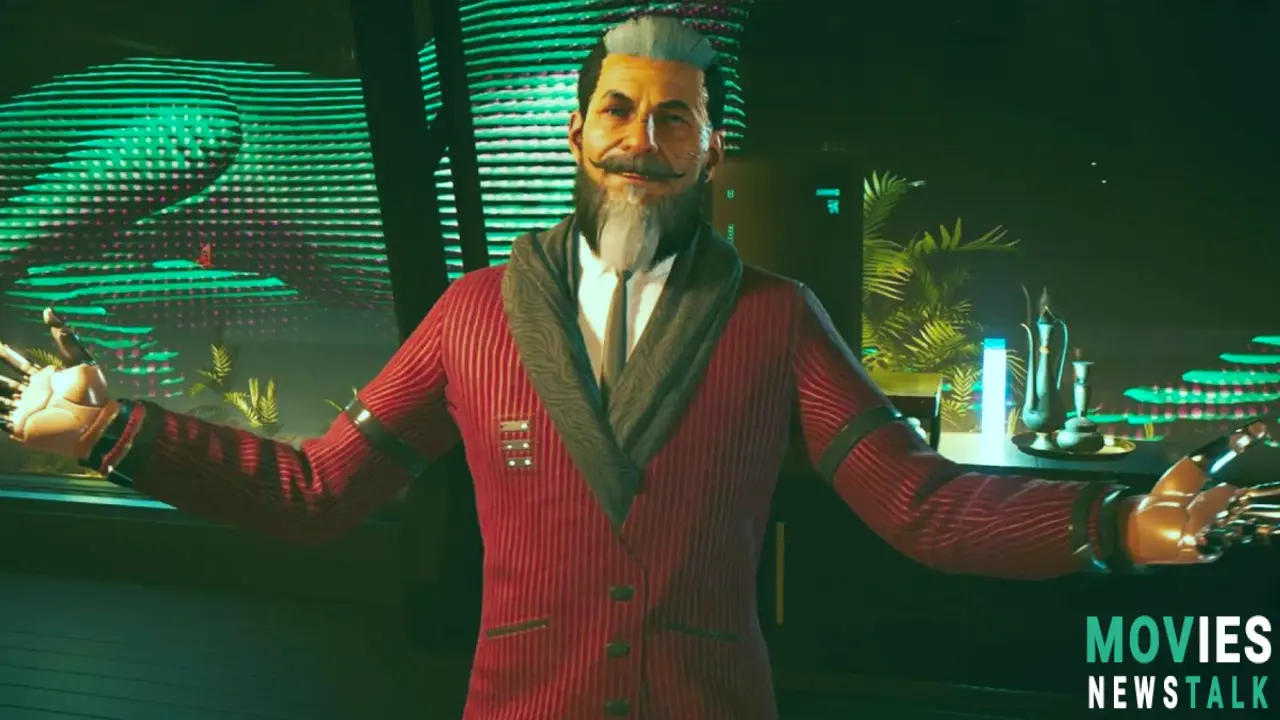Dogtown’s Gigs Tie Into One Another To Create A Sense Of Place
Whereas the base game’s gigs are stretched thinly across the entirety of Night City, Phantom Liberty concentrates its content on Dogtown, a district not much bigger than its real-world inspiration of Kowloon Walled City. As a result of this approach, Dogtown feels far richer and more lifelike than the surrounding city. Gigs tie into side jobs, other gigs, and eventually the main story to create a realistic sense of Dogtown as an unstable, interconnected community.
Pull on one thread in Longshore Stacks, and another will come loose in Terra Cognita. Choose to rescue a corpo prisoner during a gig, and he’ll pop up three days later with a new side job for the player. And as V takes on more gigs, the stakes rise accordingly. They’ll be infiltrating corpo labs and high-tech academies instead of dingy scav dens, affecting everything from a local braindance store’s footfall to global politics. Compared with how flat much of the base game’s side content can seem, it’s a thrill.
Phantom Liberty’s Side-Content Explores The Niches Of Its Cyberpunk Setting
The Cyberpunk setting is largely a patchwork of other genre media, so it’s unsurprising that the base game’s side content is reliant narratively on intertextual references. The game alludes to almost every cyberpunk IP out there, from Blade Runner to Akira to Transmetropolitan, and takes obvious inspiration from William Gibson, a science fiction writer and pioneer in the cyberpunk sub-genre. While Phantom Liberty’s main plot similarly struggles with its own identity (it’s basically one huge homage to Escape From New York), its gigs and side-jobs scratch at the fringes of the setting and unearth some brilliant original material.
Gigs like "Spy in the Jungle" offer precious glimpses of the situation outside North America, whereas "Talent Academy" demonstrates the toll of corporate commodification of human beings. It’s pulpy, but genuinely intriguing stuff that’s light years beyond the brainless hack-this, shoot-that formula of the base game gigs. The player choices, too, are murky in a way that echoes The Witcher 3. Take "The Man Who Killed Jason Foreman," for example, in which V must decide whether to murder a killer suffering from severe mental illness in order to satisfy the victim’s family.
Phantom Liberty Improves Side Content
For all its shimmering neon puddles and photorealistic drivebys, the base game’s Night City can feel shallow at times. Except for the main story and a handful of memorable side-jobs most activities are like NC mercs: a dime a dozen and usually finished in five minutes. NCPD contracts and the majority of Cyberpunk 2077’s gigs are mindless combat courses that seem to exist solely for XP rewards and upgrade materials. Shooting and looting are fine for more open-ended RPGs, but it feels reductive in a game with such a rich and thought-provoking setting. Phantom Liberty, however, learns from this mistake.
Perhaps the DLC’s most surprising improvement, however, was in beefing up the narratives and environments of its gigs.

